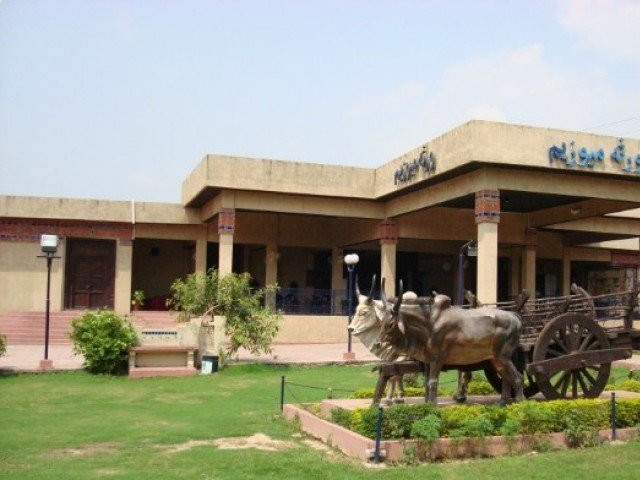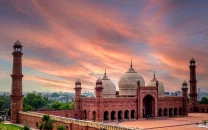Unpacking the myth and mystery of Lahoot Lamkan
Researcher says he found that Lahoot’s origins traced as far back as the sixth and seventh centuries

Lok Virsa. PHOTO: FILE
This was stated by Baloch writer and researcher Panah Baloch during an interactive ‘Muzakra’ session at the Lok Virsa on Lahoot Lamakan and the journey of spiritual and cultural significance.
Panah, who has written six books on culture and literature, including one on Lahoot Lamakan, said that the Lahoot is located in Shah Noorani, district Khuzdar. Every year, thousands of pilgrims journey from Sehwan Sharif in Sindh to Lahoot, covering a distance of 200 kilometres.
Once this journey is completed, the pilgrims receive the title of Lahooti.
He explained that the journey takes somewhere between three to eight days to complete and is usually undertaken by people hailing from the Shia community. But, he added, he had seen all kinds of people visit Lahoot, including visitors from as far as Iran and China, who had travelled to pay their respects or perform rituals.
The journey includes stops in Noor Wahi, Chonghar, Mai Kinari and Dewana Shah in order to perform rituals such as dipping and swimming in ponds to purify the soul, climbing steep hills upright and in a crouched position, and walking through narrow channels in the cliffs.
Panah said that this journey is a way for believers to seek forgiveness and start afresh, and they leave the place as if they were reborn.
He told the audience that his search for Lahoot’s origins took him as far back as the sixth and seventh centuries. His research, though, could not yield the exact period or point of its origin or how Lahoot even got its name.
Panah said that the cave and location somehow came to be associated with Hazrat Ali (RA), who is fabled to have stayed there with his family, hence its reverence for members of the Shia community.
“There is also the myth that Hazrat Ali (RA) came to this place to evict a giant,” he said.
Today, that place features dhamal and a set of rituals which are said to have been passed down for centuries.
Talking about his book, Panah said that it details several tales and myths surrounding Noorani which have been borrowed and mixed from various faiths including Hinduism.
Some members of the audience found the description of the journey fascinating, while others argued that many of the myths and stories were fabricated and concocted. Some also noted the influence of various religions but claimed the entire journey was strictly business.
An audience member also questioned the dates of the events narrated by the speaker and asked about references in recorded history.
Published in The Express Tribune, February 23rd, 2019.


1675249047-0/image-(18)1675249047-0-208x130.webp)
















COMMENTS
Comments are moderated and generally will be posted if they are on-topic and not abusive.
For more information, please see our Comments FAQ